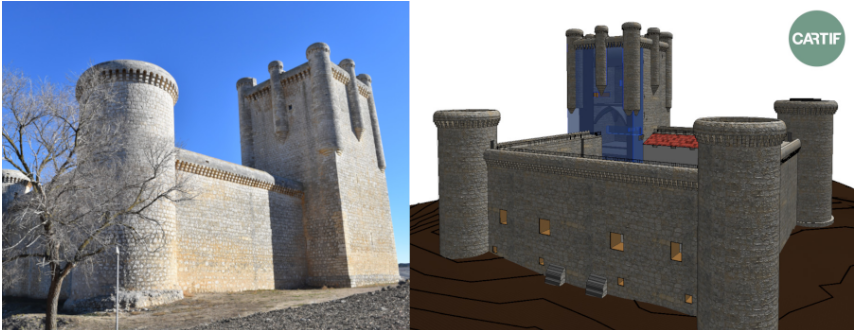The BIM approach (Building Information Modelling) is all around Architecture, Engineering and Construction professionals, but when it comes down, very few companies are founding their daily work on this paradigm and applications are really far from being homogeneous. BIM is many times (let’s say “usually”) incorrectly identified as a specific software package or a type of 3D digital model. However, BIM is much more than a newer version of CAD or a 3D visualisation tool.
The BIM approach provides a digital featuring of a building or infrastructure throughout its whole life-cycle, adding extra information to help making better and more-timely decisions upon a 3D model that allows a multidimensional analysis: 4D (evolution); 5D (costs); 6D (sustainability -including energy efficiency-); 7D (maintenance).
Although there is still a lack of knowledge on how BIM and associated digital innovations are applied across European countries, the European Directive 2014/24/EU imposes BIM Level 2 for government centrally procured projects. Level 2 refers a collaborative process of producing federated discipline specific models, consisting of 3D graphical data (those visually represented) and semantic data (those significant additions) as well as associated documentation (for instance: master plans). Information is exchanged using non-proprietary formats, such as Industry Foundation Classes (IFC).
Consequently the built heritage is subject to BIM for the purposes of documentation, conservation and dissemination, but the distinctiveness and sensitivity to meet heritage demands requires technological and methodological particularizations leading to the concept of Heritage-BIM (H-BIM). The purpose of H-BIM is to provide a 3D parametric model as a “container” of information generated all over time by different procedures, by different people, and from different sources (hw & sw). The model would capture the multidisciplinary nature of Heritage, far away from the simplicity and modularity of conventional construction, and would be very useful to study, evaluate the state of conservation and plan interventions on the assets in a profitable way. It is quite a challenge for a sector where digitization is a pending issue.
This technologically means facing many challenges, starting with the minimum amount of graphical and semantic data that would be adequate to support the activities of the sector. Two of the most important are:
- The combination of 3D data with different types of images (thermography, high resolution photographs or multispectral recordings) to produce a really useful H-BIM model for exhaustive assessment.
- The photorealistic texturing of 3D models for a rigorous representation of reality.
Both aspects are being worked by CARTIF to decisively help companies, managers and public administrations in the digitization of Cultural Heritage.
- Artificial Intelligence and Cultural Heritage: A Promising Alliance (With Nuances) - 7 November 2025
- The black gold of Castilla y León: its Cultural Heritage - 5 December 2024
- Talking about everything visible and invisible (II) - 30 August 2024
